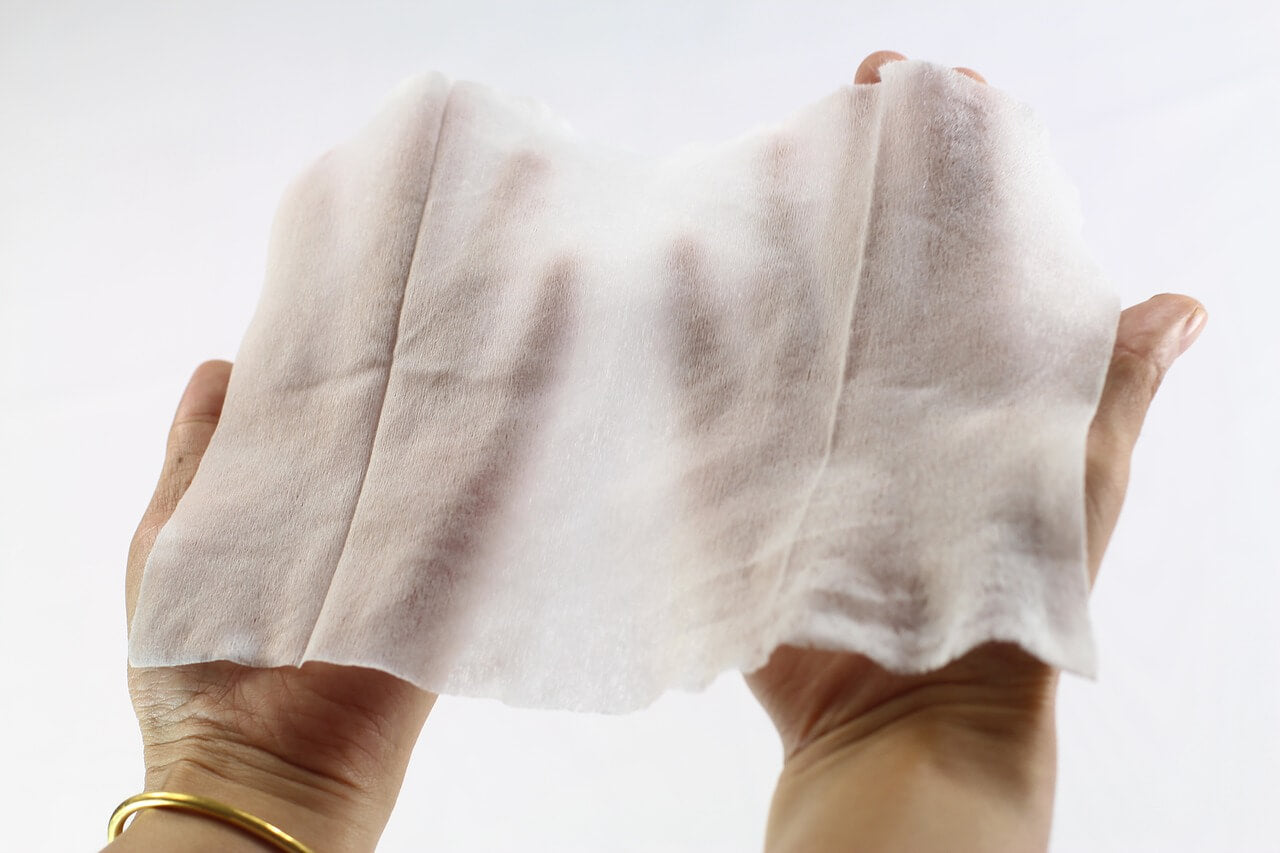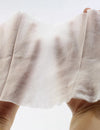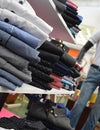
By Jared Boles, for Plastifree
Do not, under any circumstances, flush any sort of wet wipes down the toilet! That’s the main point of this article, and if that's enough to convince you never to flush convenience wipes down the toilet, thank you for changing your ways! You can sit back, kick up your feet, crack a smile, and know you’re doing the world a great favor! Rather read on? Great! Welcome aboard! Oh, by the way, things are about to get icky, because we’ll be taking a cruise through the world’s fetid sewers and polluted rivers choked up with persistent, hazardous, and downright nasty “flushable” convenience wipes. Enjoy the ride!
Walk into any convenience store, supermarket, big box store, or just about any other place stuff is sold, and after a quick search you’ll find the ever-convenient “flushable” wipe. In fact, it’s likely most of the cleansing or disinfecting wipes you come across will either tout their convenient flushability or not mention the topic of disposal at all. But what makes a wipe flushable in the first place? Well, on the surface just about every wipe “seems” flushable in the sense that it will go down the toilet. Out of sight out of mind, so to speak. What we’ve found beneath the surface, however, is that just because it can go down the toilet doesn’t mean it should. Shockingly, that rule even applies to the so-called “flushable” wipe. As master plumber and Washington Post contributor Tim Carter puts it, “The labeling on the product is accurate if you want to split hairs. You can flush these wretched wipes down the toilet… You can also flush plastic army men, plastic dinosaurs, golf balls, keys, sand, gravel, cellphones, underwear, cosmetic bottles, pill bottles, etc., down toilets” (1). So, why don’t convenience wipes belong in the toilet, and if that rule applies to wipes marked as flushable, then why are they still being marketed as such? What’s the harm of flushing them anyways? Well, are you sure you want to deep dive into the filth of the sewers and dirty corporate self-interest? Alright, onward we go…
In 2017 a monster was found hiding under the streets of east London. No, not a fire-breathing dragon ala the exciting 2002 movie “Reign of Fire”, rather, a monster much larger and more hideous. Analysis of the monster found it to weigh a massive 130 metric tons (as much as 19 grown African elephants), with a length at 820ft and its composition to be primarily of fat, hair…and wet wipes. That’s right, the London sewers were clogged with an enormous, aptly-named “fatberg”. While this fatberg was of exceptional size, so much so that it (somehow) was put on temporary display at the Museum of London, its smaller cousins are by no means uncommon. In 2013 a smaller fatberg found under London’s Kingston upon Thames still took three weeks of hard work and heavy equipment to clear out (2, 3). Even in the much smaller British city of Sidmouth, a 210ft fatberg was found in January 2019. In October, 2018, back in the United States a comparatively tiny 12-foot clog in Charleston, South Carolina, brought service to a stop for days and cost the city more than $140,000 in damage and cleanup costs (4).

No, it's not a fancy pungent European cheese, this is a closeup of a fatberg taken from a sewer clog! Still hungry for bleu cheese? Photo courtesy of Northumbrian Water, UK.
The common denominator linking all of these very expensive and very nasty incidents: disposable convenience wipes. What happens is that sewer systems are full of twists and turns, as well as imperfections that can easily snag and pin any number of the durable wipes. Once caught, the resiliency of the wipe will not allow it to rapidly degrade as toilet paper and excrement do, rather it takes on a second life soaking up grease, hair, and other debris. In time, this disgusting little lump is able to catch more and more wipes, which continue to pick up fats from the water….and the brown snowball effect continues until you have a fatberg clogging the system. If this occurs close to your home, backup can occur with results I’m sure you can vividly imagine (5). Perhaps the scariest part is how often sewer clogs occur, and how much money it costs taxpayers to fix system-wide blockages. Back in Britain, it is estimated that “flushable” wipes are responsible for 93% of the nation’s sewer blockages, resulting in around 300,000 cases each year costing an average £100 million annually (3). Across the pond in Canada, the city of Toronto alone required near 10,000 maintenance calls every year between 2010 and 2018. One estimate puts the taxpayer-funded cost to remove wipe-related blockages across Canada at $250 million per year (6). In the United States it’s no less expensive; even in the tiny little Minnesota town of Avon, with a population just under 1,000, the city has spent nearly $100,000 to upgrade the city’s sewer pumps, and yet still must spend nearly $4,000 a year just to clear wipes from the pumps(5)! That’s just one tiny town out of thousands nationwide! How much more might you be paying for sewer services to cover the costs of “flushable” wipe clogs? Still think the small convenience is worth the cost?

This maintenance worker is cleaning off a sewer bar grate in Eagan, Minnesota, which must be cleared of "flushable" wipes every single day on the taxpayer dime. Photo courtesy of Minnesota Pollution Control Agency.
Ok, fatbergs are the stuff of nightmares, and probably your sewer utility bill too, but do wipes do any long term damage to more than infrastructure and pocketbooks? Actually, yes, and actually a lot of damage. Once again we return to the water systems of London for perhaps the most powerful example of the damage potential of wipes even within a fully modernized “First World” societal infrastructure, this time looking at the ecological cost of “disposable” and “flushable” convenience wipes outside the sewers. Specifically, let’s look at London’s iconic Thames river and its famous reefs….Oh? You’ve never heard of the Thames Reef? Well, that’s probably because it’s a rather new reef that, while all the other reefs around the world are suffering and dying, it continues to grow rapidly. How is that you ask? Well, that’s because the reef of the Thames is made out of “flushable” convenience wipes. That’s right, the River Thames is absolutely flush with wet wipes. A recent bathymetric survey of the river found mounds of wipes beneath the surface up to 50 meters wide, 17 meters long, and more than a meter high. When wipes make it into rivers like the Thames, they tend to get snagged on rocks and branches, building up and grabbing more wipes and debris until a “reef” is formed, eventually becoming artificial islets that change the flow of the river and create new shorelines of persistent manmade waste (2).

Bathymetric mapping of River Thames "flushable" wipe reefs. Image courtesy of Thames21.
On March 23, 2019, 160 volunteers with the organization Thames21 met on a stretch of shore in West London for a cleanup effort. Their results were incredible, and disturbing; in just two short hours, the 160 volunteers removed and recorded 23,000 wet wipes from the shore alone! Alice Hall, one of Thames21’s group coordinators described how the Thames has become “a Frankenstein foreshore, part plastic part natural… Our rivers are becoming plastic rubbish dumps: millions of wet wipes, which often contain plastic, being flushed down loos and then discharged into our rivers when the sewers can’t cope. We’ve seen the mounds growing very fast over the past few years”(7).

Masses of tangled "flushable" wipes, trash, dirt, and debris making up much of the modern River Thames shoreline. Image courtesy of Thames21.
While much of the London sewer system is being replaced and upgraded, the city population has grown dramatically in the last century, straining existing infrastructure like the sewer which is often overwhelmed by citizen use and washouts from heavy rains which cause it to overflow and pour straight into the river (7, 2). Even when functioning properly, sewer systems still allow many plastic fibers like polyester found in wet wipes and clothing to escape with the treated water back into the environment through our rivers and oceans, contributing to the mounting microplastics problem. Where microplastics are a problem, having whole wipes escaping into the environment en masse is an absolute catastrophe. Benthic animals on river and seabeds are smothered under the wipes which deplete oxygen in the water; animals that depend on provision from the river and its eventual ocean destination choke to death on plastics that they confuse for food, such as sea turtles whose survival rate to adulthood has dropped from an estimated 1/1,000 to 1/10,000 in recent years due to plastics consumption (5 of the world’s 7 remaining sea turtle species come to British waters to feed)(8). In fact, even massive whales have died from starvation as their stomachs fill with plastic debris and become impacted. Enough wipes have reached the oceans around Britain alone that, even in the vastness of the seas, an annual nationwide coastal cleanup effort by the Marine Conservation Society in 2015 still found nearly 4,000 among all the masses of other plastics littering the shores. That’s nearly 50 wipes found every kilometer from just that year’s work (4, 8)!
So how have “flushable” convenience wipes, clogging sewers and rivers around the world, become such a huge problem? Heck, why are they still being called “flushable” anyways?! Well, first of all, the convenience wipe market has become massive in just the last few decades of its popularity and widespread use. Grand View Research puts the total global value of the market for 2018 sales alone at $15.8 billion US, with the heavy majority of consumers residing in North America and Europe and the largest individual category of product being baby wipes at 30.9% (9). With a market that massive, quite a few companies want a piece of the pie, and so competition for your cash can get a bit Machiavellian, i.e. “the ends justify the means” sorts of shadiness. Wipes get marked “flushable” because to be otherwise is inconvenient, and convenience is king. The biggest problem is that globally there are few if any laws that hold wipe manufacturers to any enforceable standard, and industry standards in place by organizations like the Association of the Nonwoven Fabrics Industry (INDA) are voluntary. In fact, even if a company were to voluntarily seek INDA certification, the organization’s tests to determine breakdown of wipes in a sewer use simulations that seem specially designed to allow most wipes to receive a passing grade, as the simulation uses much more force and turbulence than a typical sewer can generate and requires only 60% of the wipe to break apart (6). One group looking to change the deceptive marketing and self-serving “industry standards” in the convenience wipe industry is the International Water Services Flushability Group (IWSFG), which tests wipes under super-realistic conditions that mimic the actual turbulence of a sewer and place pass/fail standards based on the speed and degree of degradation observed (6, 10). A recent study by researchers at Ryerson University in Canada employed a recreation of the sewer simulations used by the IWSFG to a pool of 101 commonly flushed items easily obtained in southern Ontario where the study was conducted. Of the 101 items, 73 were convenience wipes like baby wipes and cleansing wipes; 11 items were bathroom tissue; and the rest of the items were items like facial tissues, paper towels, and diaper liners. Of the sampled wipes, most (56%) of the 32 varieties of adult cleansing wipes were labeled “flushable”, while in contrast a majority of the baby wipes and home cleaning wipes were either labeled “Do not Flush” or displayed a “Do not Flush” symbol somewhere on the packaging. The study did find, however, that most of those brands that did display a disposal warning failed to do so in a manner consistent with even INDA standards, i.e. they had done everything they could to make the symbol small or hidden in text and package folds. In total, of the 73 wipe varieties, 31 were either labeled “flushable” or failed to display any form of “Do not Flush” warning whatsoever. At the end of testing, results were disappointing, though not entirely surprising based on what we’ve already covered; not a single wipe out of 73 was able to break down enough to pass. In fact, only two wipe varieties showed any sign of deterioration whatsoever; one cleansing cloth out of five, and one cleansing wipe out of 32. Of the 101 commonly flushed products, only 11 passed testing, and they were all varieties of toilet paper. So, once again, ONLY human waste and toilet paper belong in the toilet.
Bottom line, if you feel you absolutely “must” use disposable wipes despite the fact that most are made of mixed man-made materials, used convenience wipes of any kind belong in the garbage bin and nowhere else! Truly “flushable” wipes don’t exist! If you don’t end up feeding a hungry fatberg, jamming a sewer pump, or otherwise costing yourself and your fellow taxpayer bookoo bucks, you’ll be sending persistent microplastic fibers or worse yet entire wipes into the ecosystem to choke our waterways and wildlife. If you need something better than toilet paper to keep your rear clear, consider investing in a bidet attachment for your toilet or a spray-on moistener for toilet paper currently available here from Elevated Body Care. And what if you’re worried about exposing yourself and your family to germs, and absolutely “need” an antibacterial wipe? Well, there are better options out there, like this natural biodegradable hand sanitizer also from Elevated; however, sometimes it’s best to accept germs are a natural part of…well, nature! Removing ourselves too far from nature has well-known negative effects on health, and as Dr. Bernard Cohen, professor of dermatology and pediatrics at Johns Hopkins says, “I believe a little bit of dirt for kids can go a long way.” He and other doctors agree that too sterile an environment can hinder immune development in children and actually make them much more susceptible to bacteria and allergens most of us would have no problem fending off. “I’m not saying don’t clean your kitchen, but a little dirty sponge and water is probably fine,” he clarified (4). So, after taking a nauseating trip through the sewers, down polluted riverways, and into the crooked world of marketing deception, you might understandably feel a little dirty… But are you sure you want a wet wipe?
Sources
- Carter, Tim. (2019, May 21). Flushable wipes are terrible for plumbing. The Washington Post. Retrieved from https://www.washingtonpost.com/business/2019/05/21/flushable-wipes-are-terrible-plumbing/
- Begum, Tammana. (2019, August 13). Why you should never flush wet wipes down the toilet. Natural History Museum. Retrieved from https://www.nhm.ac.uk/discover/news/2019/august/why-you-should-never-flush-wet-wipes-down-the-toilet.html
- Anonymous Author. (2019, January 11). Wet Wipes to get ‘Fine to Flush’ logo to tackle fatbergs. BBC News. Retrieved from https://www.bbc.com/news/business-46835573
- Miller, Ryan W. (2019, September 7). You’re probably using disposable wipes wrong. How to avoid harming the planet, the sewers. USA Today. Retrieved from https://www.usatoday.com/story/news/nation/2019/09/07/disposable-wipes-can-impact-sewers-landfills-waterways-and-health/1777416001/
- Anonymous Author. Don’t flush your disposable wipes. Minnesota Pollution Control Agency. Retrieved from https://www.pca.state.mn.us/wipes
- Kart, Jeff. (2019, April 10). Study results: dispose of your ‘Flushable’ wipes in the garbage. Forbes Media LLC. Retrieved from https://www.forbes.com/sites/jeffkart/2019/04/10/study-results-dispose-of-your-flushable-wipes-in-the-garbage/#6b3309b11583
- Anonymous Author. (2019, April 1). 23 thousand wet wipes discovered on stretch of Thames river bank. Thames 21. Retrieved from https://www.thames21.org.uk/2019/04/23-thousand-wet-wipes-discovered-stretch-thames-river-bank/
- Mathiesen, Karl. (2015, March 19). Wet wipes found on British beaches up more than 50% in 2014. Guardian News & Media Limited. Retrieved from https://www.theguardian.com/environment/2015/mar/19/dont-flush-wet-wipes-toilet-conservationists
- Anonymous Author. Personal care wipes market size, share & trends analysis report by product type (baby, facial & cosmetic, hand & body), by distribution channel….. Grand View Research, Inc. Retrieved from https://www.grandviewresearch.com/industry-analysis/personal-wipes-market
- Khan, A., Orr, B., Joksimovic, D. (2019, March 31). Defining ‘flushability’ for sewer use. Ryerson University. Prepared for Municipal Enforcement Sewer Use Group of Canada. Retrieved from https://www.ryerson.ca/content/dam/water/Research/FinalReport-FlushablesApril1.pdf









